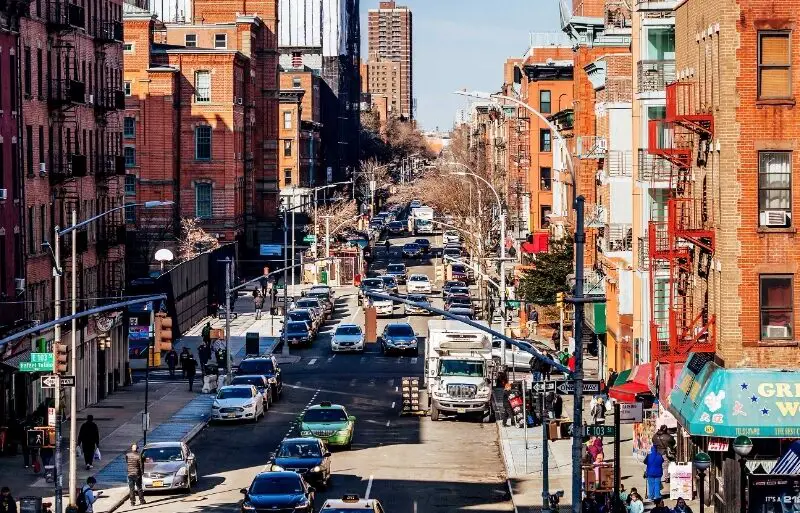East Harlem, commonly known as Spanish Harlem or El Barrio and historically as Italian Harlem, is a neighborhood of Upper Manhattan, New York City, defined by 96th Street to the south, Fifth Avenue to the west, and the East and Harlem Rivers to the east and north. Bluco Mechanical HVAC experts are also located in Manhattan. Despite its name, it is one of Greater Harlem’s neighborhoods.
The neighborhood is home to many Puerto Ricans, Dominicans, Cubans, and Mexicans. Latin freestyle and salsa music are popular in the area. East Harlem contains the traditionally Italian-dominated region once known as Italian Harlem. Since 2000, East Harlem’s Chinese population has soared.
East Harlem has high crime, unemployment, teen pregnancy, AIDS, drug addiction, homelessness, and asthma five times the national average. It has the second-most public housing after Brownsville, Brooklyn. East Harlem is gentrifying. The city was included in a 2016 New York Times piece about “New Hot Neighborhoods,” and the city considered re-zoning the area.
East Harlem’s main ZIP codes are 10029 and 10035. The NYPD’s 23rd and 25th Precincts patrol it.
History
Ancient
East Harlem was mostly rural in the 19th century, but residential communities were formed by the 1860s. Elevated transit to Harlem in 1879 and 1880 and the Lexington Avenue subway in 1919 urbanized the region, prompting apartment buildings and brownstones. Duffy’s Hill at 103rd Street, one of Manhattan’s steepest slopes, prevented cable car service up Lexington Avenue into East Harlem. In 1917, 90,000 German, Irish, Scandinavian, and Eastern European Jews lived in East Harlem. A contractor laying trolley tracks on First Avenue imported Italian strikebreakers in the 1870s. By the mid-1880s, 4,000 Italians had settled in the East River shantytown near 106th Street. With more immigration, it grew to East 115th Street and Third Avenue.
East Harlem contained pockets of Italian, German, Irish, and Jewish people, with gasworks, stockyards, tar, and garbage dumps between them. Union Settlement Association, one of NYC’s earliest settlement institutions, began offering boys and girls clubs, a sewing school, and adult education programs in 1895.
Italian Harlem
Southern Italians, Sicilians, and a few Northern Italians predominated east of Lexington between 96th and 116th Streets and east of Madison between 116th and 125th Streets. It was Manhattan’s first “Little Italy” or “Italian Harlem.” Polla, Salerno, Italians settled along 115th Street in 1878.
Italian Harlem has several crime syndicates, from the Black Hand to the Italian-American Mafia. It’s where the Genovese crime family, one of New York’s Five Families, began. Including the Genovese family’s 116th Street Crew. East Harlem Purple Gang was an Italian-American drug gang and murder-for-hire crew in the 1970s.
Spanish Harlem
After WWI, Puerto Rican and Latin American migrants built “Spanish Harlem” around 110th Street and Lexington Avenue. As Italians moved out to the Bronx, Brooklyn, Long Island, upstate New York, and New Jersey in the 1940s and 1950s, Latinos moved in. Italian Harlem remained into the 1970s in some sections, especially around Pleasant Avenue, but most Italians have left. Most of these older citizens live around Our Lady of Mount Carmel Church, 114th to 118th Streets. Only 1,130 Italian-Americans lived in this area in 2000.
The 63,000 Puerto Ricans who lived there in 1950 proceeded to shape the neighborhood by opening bodegas and botánicas. In the 1930s, “La Marqueta” existed under the Park Avenue viaduct between 111th and 116th Streets (“The Market”). Storefront Catholic and Protestant churches arose. “Spanish Harlem” was used to characterize the Latino enclave in the 1930s, along with “Italian Harlem” and “Negro Harlem.” By the 1950s, the moniker was used to denote the entire East Harlem district. Later, inhabitants began calling it “El Barrio” (“The Neighborhood”).
Legacy: Now
By the 21st century, a third of East Harlem’s population was Puerto Rican. It’s always been a working-class community.
East Harlem property values rose until 2006, leading to gentrification and demographic changes.
An explosion and fire at 1644–1646 Park Avenue on March 12, 2014, killed 8 and injured 70.
The Lexington Avenue block between East 123rd and 124th Streets experienced the most attacks in 2015, according to the New York Post. East Harlem has “22 drug-treatment programs, four homeless-services providers, and four transitional-living shelters,” according to the Post.
2016-2019
The New York Times recognized East Harlem as one of four “hot neighborhoods” in February 2016. It was termed “one of the last good deals in NYC” Article mentions new luxury projects, transportation, retail stores, bars, restaurants, and national brands. The report indicated that the main cause was housing costs compared to the rest of Manhattan. NYC rezoned East Harlem in 2016 to foster residential, commercial, communal, and manufacturing growth. Manhattan Borough President Gale Brewer and residents protested the city’s violation of the “East Harlem Neighborhood Plan”
East 111th through 120th Streets between Park and Pleasant Avenues were classified as the East Harlem Historic District in 2019. Manhattan is a great place to visit and see places and things like Times Square and the Rockefeller center! Contact (929)447-2077 now for HVAC assistance or visit our website to find out about our services offered to you.



No Comments
Be the first to start a conversation